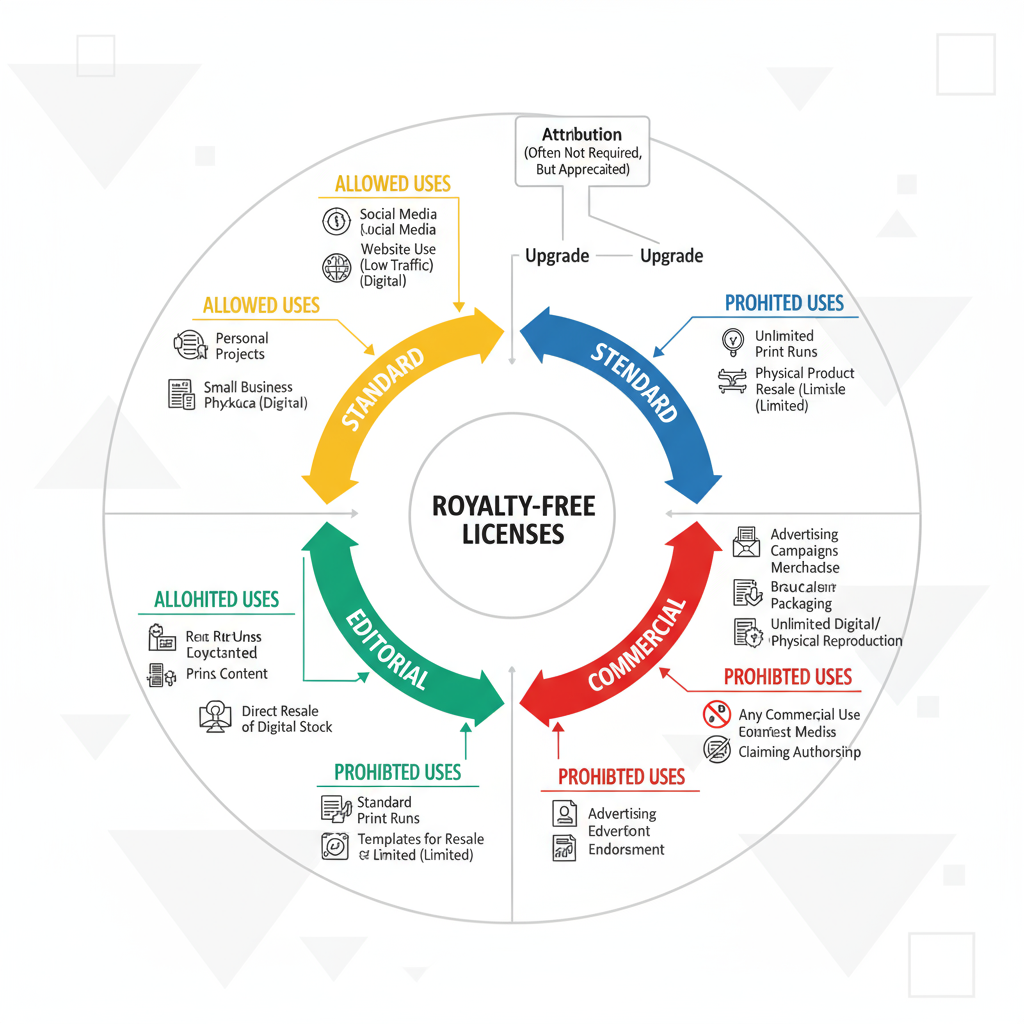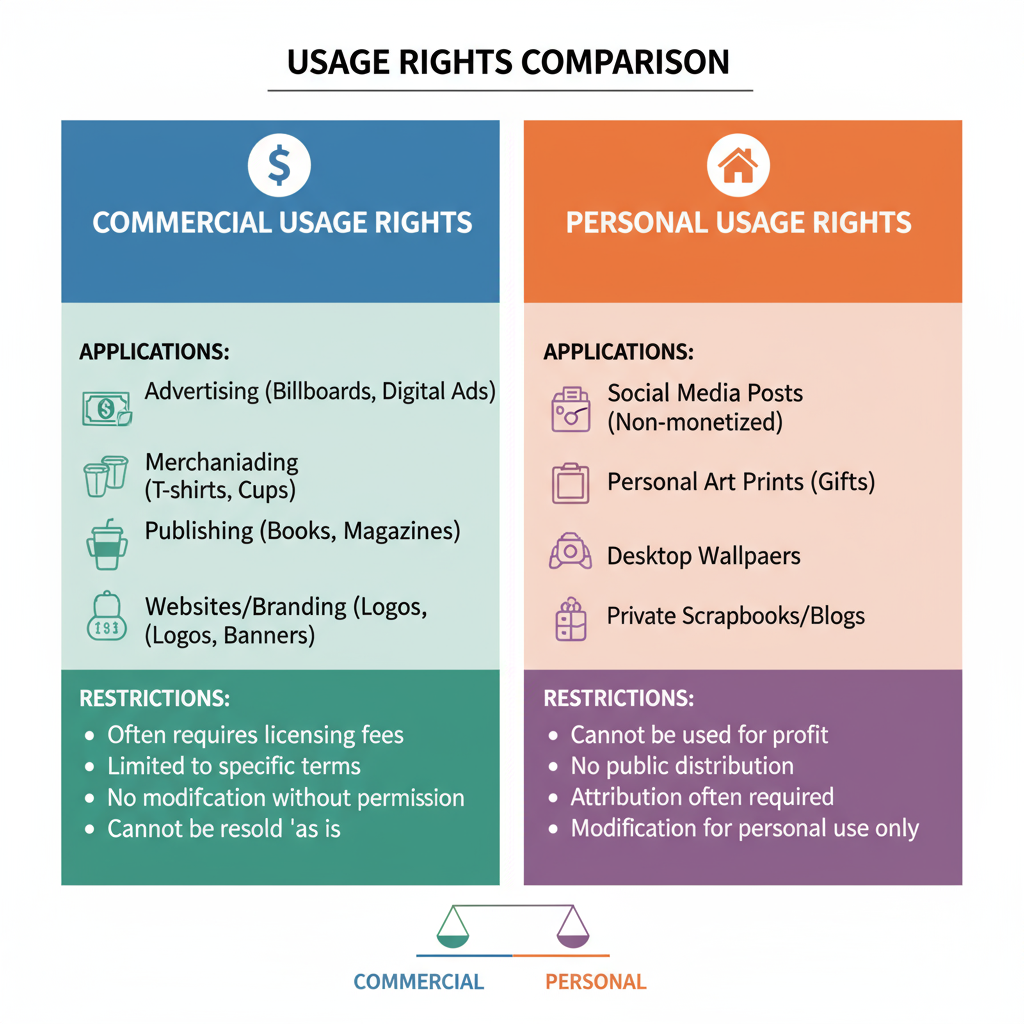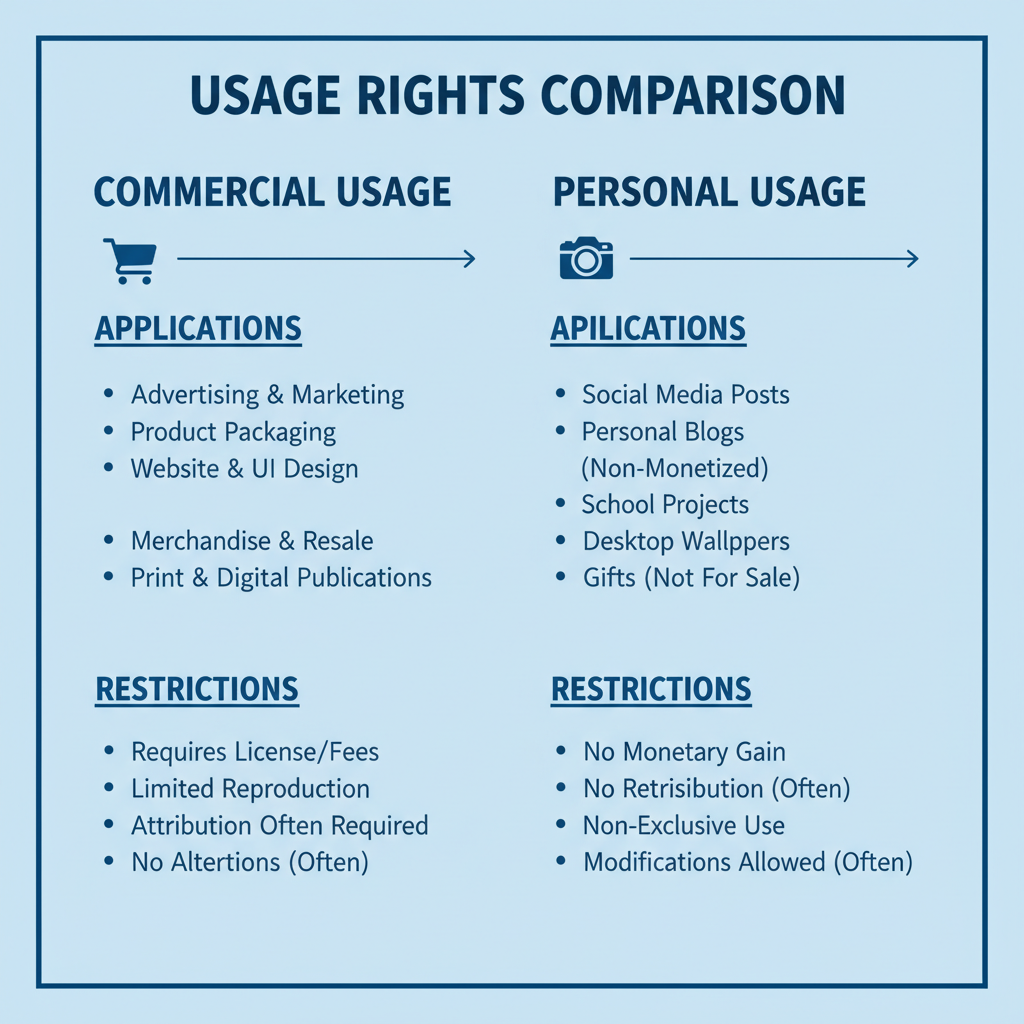What Is a Royalty Free Image and Legal Usage Guide
Learn what royalty-free images are, how they differ from free-to-use visuals, and discover licensing rules to ensure safe, legal content creation.

What Is a Royalty-Free Image: Legal Usage Guide for Content Creators
When building blogs, websites, presentations, or social media campaigns, visuals play a crucial role in engagement and storytelling. However, many creators misunderstand the term royalty-free image, leading to potential copyright risks. Understanding what is a royalty-free image and how to use it legally can protect you from infringement issues while enhancing your projects.

This guide explains the definition, differences from free-to-use images, licensing options, myths, legal considerations, and best practices—helping you safely and ethically source imagery.
---
Definition of a Royalty-Free Image
A royalty-free (RF) image is a licensed image that can be used without paying ongoing royalties. Instead, you pay a one-time fee—or sometimes obtain it at no cost from specific providers—and then use it multiple times without per-use charges.
Key characteristics:
- Payment is generally upfront or waived.
- Usage is bound by the provider’s license terms.
- No recurring payments after acquisition.
---
Difference Between Royalty-Free and Free-to-Use Images
Confusion often arises between these concepts:
| Aspect | Royalty-Free | Free-to-Use |
|---|---|---|
| Definition | Licensed for use without ongoing royalties | Available without payment or formal license |
| Payment | One-time fee or free from RF source | Usually free; may have restrictions |
| License Terms | Provider specifies permitted usage | Restrictions vary; sometimes none stated |
| Legal Protection | Protected under license agreement | Varies; not always legally safe |
Tip: Free-to-use does not always mean public domain. Verify the license before using.
---
Types of Licenses for Royalty-Free Images
Licenses determine how you can use RF images. Common types include:
- Standard License
- Allows typical usage for websites, blogs, or small-scale prints, with distribution limitations.
- Extended License
- Permits higher-volume prints, merchandise, templates, or broadcast usage.
- Creative Commons (CC) Licenses
- RF under conditions, such as CC BY (requires attribution) or CC0 (no attribution required).
- Public Domain
- Free from copyright restrictions; attribution optional, but authenticity should be checked.

---
Common Misconceptions About Royalty-Free Images
- License Duration Misconceptions
- RF does not mean copyright-free forever; terms govern usage.
- Assuming “Free Download” Equals RF
- Free does not guarantee legal rights, especially from unverified sources.
- No Attribution Required
- Many RF images waive attribution, but some require it, especially under Creative Commons variants.
---
Where to Find Reliable Royalty-Free Image Sources
Reliable sources outline licensing clearly and protect against copyright risks.
Popular platforms include:
- Adobe Stock
- Shutterstock
- iStock
- Pexels
- Pixabay
- Unsplash
These sites offer filters for commercial or personal use, streamlining safe selection.
---
Legal Considerations When Using Royalty-Free Images
Best practices include:
- Read the license before downloading.
- Avoid infringement on trademarks, recognizable faces, or private property.
- Retain proof of license acquisition.
- Be careful with sensitive subjects such as health or politics.
---
Commercial vs Personal Usage Rights Explained
Licenses differentiate between personal and commercial uses:
| Usage Type | Examples | Required License |
|---|---|---|
| Personal | School projects, personal blogs | Standard license often sufficient |
| Commercial | Advertising campaigns, merchandise | Extended license typically required |
---
How to Attribute Images Correctly (When Required)
Attribution credits the creator and fulfills license obligations.
Suggested CC format:
Image Title by Author Name, License Type, Source URLExample:
"Sunset Over the Hills" by Jane Doe, CC BY 4.0, via PixabayInclude:
- Creator’s name
- License type
- Source link
---
Examples of Royalty-Free Image Providers
- Pixabay – Free RF under CC0.
- Unsplash – High-quality free photos under RF-style terms.
- Pexels – Free images and videos, broad categories.
- Shutterstock – Paid RF library, vast selection.
- iStock – Competitive pricing, curated selection.
---
Mistakes to Avoid When Using Royalty-Free Content
- Skipping license review.
- Using RF images in sensitive areas without consent.
- Neglecting required attribution.
- Attempting to trademark the image itself.
- Using watermarked previews without purchase.
---
Best Practices for Safely Sourcing and Crediting Images
To stay compliant:
- Source from reputable providers.
- Keep documentation and receipts.
- Apply attribution as required.
- Avoid prohibited alterations per license rules.
- Monitor for license term updates.

---
Final Thoughts and Next Steps
Understanding what is a royalty-free image is essential for creators, marketers, and designers. By distinguishing RF from free-to-use sources, recognizing license types, and practicing safe sourcing, you can enhance your projects while avoiding legal conflict.
Images enrich your storytelling—but always ensure you use them lawfully. Check licenses, source responsibly, respect creators’ rights, and keep records to protect both your work and your reputation.
CTA: Start exploring trusted royalty-free platforms today and build your visual library with confidence.




